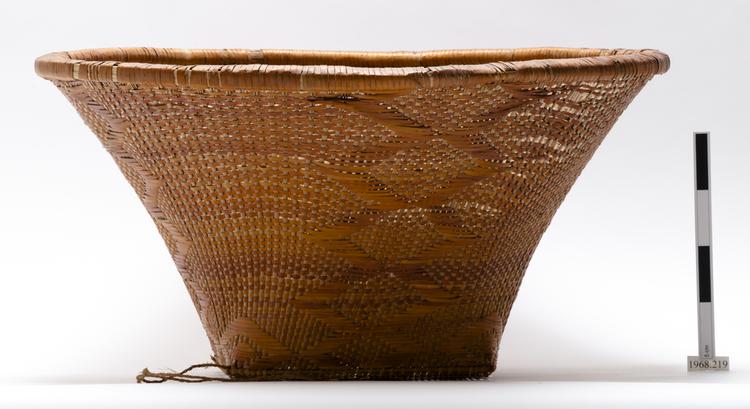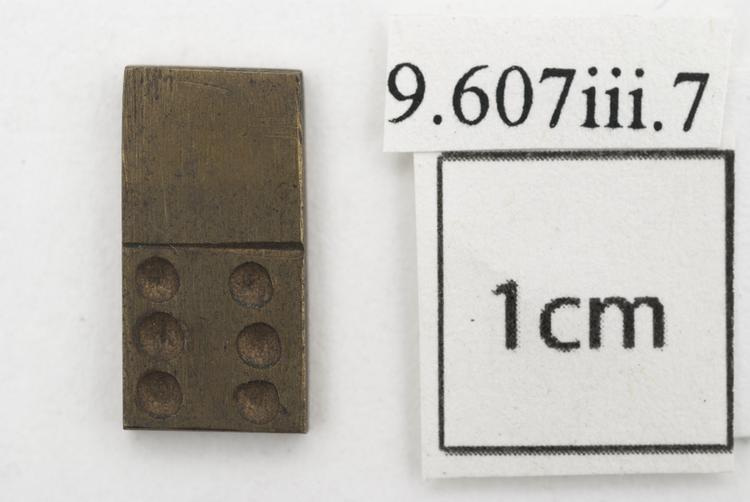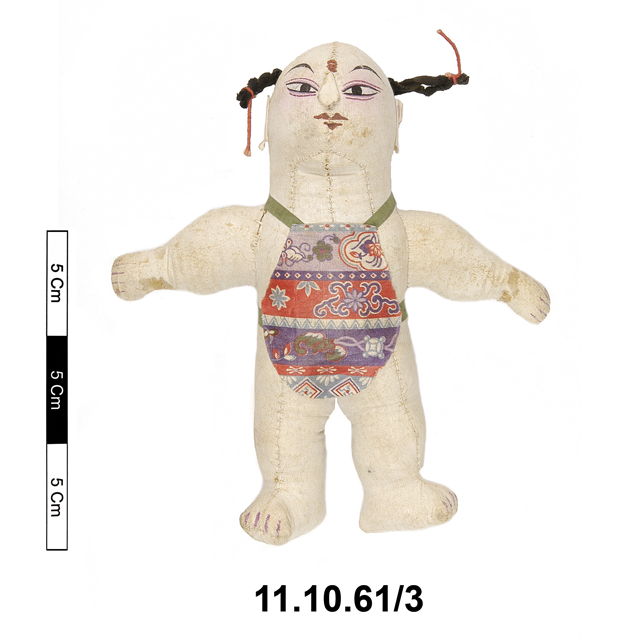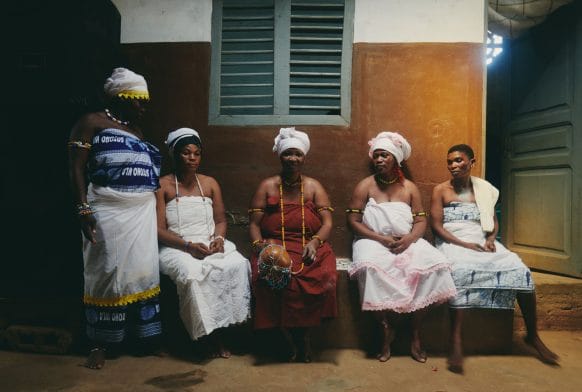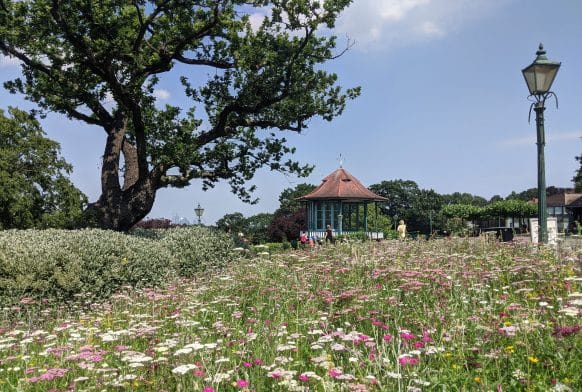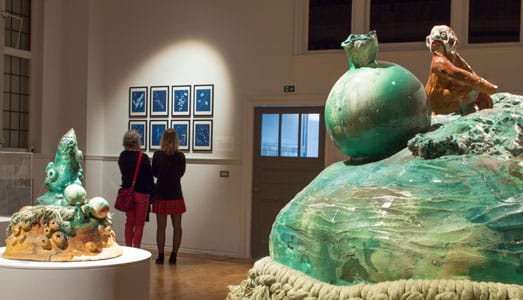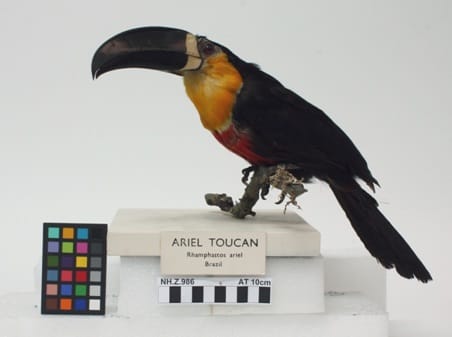Mask carved from a single piece of wood . It has an open mouth, used by the wearer as an eye-slit. The back of the head is covered with string work. Skeins of platted hair form the hair and beard. There is a neck ornament of feathers, and a long trailing cape, also of feathers.
Mask, Dagak, Kanak People, Southern or Central Grande Terre, New Caledonia, Southern Melanesia. Dagak masks such as this were carved from houp wood (Montrouziera cauliflora) and dyed black with the soot of the candlenut (Aleurites moluccana). The enveloping cape hanging from its lower edge is composed of long dreadlocks of human hair mingled with the flight feathers of the massive notou pigeon (Ducula goliath). These masks were closely associated with chiefly status in New Caledonia, and were created in association with the deaths of particular chiefs. During the chief’s state mourning period, his several official mourners (who had handled the body during burial) were, among other things, forbidden from cutting their hair. At the conclusion of this period, which could be ten years, their heads were all entirely shaved, and the resulting mass of human hair was used to make a dagak. Except in the north of Grande Terre, the dagak was not directly associated with the chief’s person afterwards. This particular style originates from somewhere in the southern half of the island, where the dagak were named after the various Kanak gods of the sea. The chief’s successors would use the dagak on certain ceremonial occasions and festivals to personify this sea-god, terrorising and chasing the people, dangerously armed with a war-spear and club. Wood, human hair, feathers, vegetable fibre. Late 19th Century. Purchased from the Berkeley Gallery in 1960.



